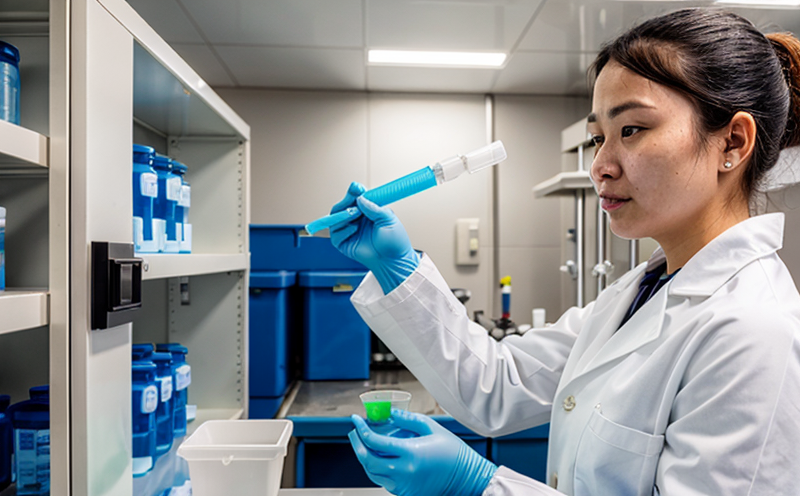USP Rinse Microbial Recovery Testing
The USP Rinse Microbial Recovery (RMR) Test is a critical component of pharmaceutical quality assurance, ensuring that the rinse water used in drug manufacturing meets stringent microbial standards. This test evaluates whether microorganisms can be effectively recovered from rinse water samples, which directly impacts product purity and patient safety.
The RMR test is conducted by inoculating known quantities of microorganisms into a controlled rinse system. The samples are then collected at various intervals to assess the recovery efficiency. The primary goal is to ensure that the rinse water does not contain any viable pathogenic organisms, which could contaminate drug products.
This testing method is governed by USP Chapter 71, which provides detailed protocols for performing these tests accurately and consistently across different facilities. Compliance with this standard ensures that pharmaceutical companies adhere to regulatory requirements set forth by the FDA and other international authorities.
The RMR test plays a crucial role in drug manufacturing processes where rinse water is used as an intermediate step in production. By ensuring that rinse waters are free from viable microorganisms, manufacturers can enhance product quality and patient safety. This test helps to identify potential sources of contamination early on, allowing for timely corrective actions.
Compliance with USP Chapter 71 not only ensures regulatory compliance but also builds trust among healthcare professionals and patients who rely on these medicines. The rigorously controlled environment in which the RMR test is conducted underscores the commitment to excellence in pharmaceutical manufacturing practices.
The results of the RMR test are reported based on standard criteria outlined in USP Chapter 71, providing clear insights into the microbial recovery efficiency of rinse water samples. This information is essential for quality managers and compliance officers to make informed decisions about process improvements and regulatory submissions.
Why It Matters
The USP Rinse Microbial Recovery Test is vital in the pharmaceutical industry as it ensures that rinse water used during manufacturing processes does not contain viable microorganisms. This test helps to maintain high standards of product purity and patient safety, thereby upholding the integrity of drug products.
- Enhanced Product Quality: By ensuring that rinse waters are free from microbial contamination, manufacturers can improve the overall quality of their final products.
- Patient Safety: Reducing the risk of contamination minimizes potential health risks to patients who rely on these medicines.
- Regulatory Compliance: Adherence to USP Chapter 71 ensures that pharmaceutical companies meet regulatory standards set by agencies like the FDA.
- Trust and Reputation: Consistent compliance with rigorous testing protocols fosters trust among healthcare professionals and patients.
The RMR test is a cornerstone of quality assurance in pharmaceutical manufacturing, providing critical data that can inform process improvements and help maintain the highest levels of product safety.
Applied Standards
The USP Rinse Microbial Recovery Test is governed by stringent standards outlined in USP Chapter 71. This chapter provides detailed protocols for conducting the test, ensuring that all pharmaceutical facilities follow consistent and accurate methods.
The key aspects of this standard include:
- Inoculation Procedures: Known quantities of microorganisms are introduced into a controlled rinse system to simulate real-world conditions.
- Sample Collection: Samples are collected at specified intervals to assess microbial recovery efficiency.
- Culture and Identification: Collected samples undergo culture and identification processes to determine the presence of viable microorganisms.
The results of these tests are reported according to strict criteria, providing clear insights into the effectiveness of rinse water in maintaining product purity. Compliance with USP Chapter 71 is essential for ensuring that pharmaceutical companies meet regulatory requirements and maintain high standards of quality.
Customer Impact and Satisfaction
- Enhanced Quality Assurance: Customers benefit from enhanced product quality, knowing that the rinse water used in manufacturing is free from viable microorganisms.
- Improved Patient Safety: By minimizing contamination risks, customers can trust that their medicines are safe and effective.
- Regulatory Compliance: Adherence to USP Chapter 71 ensures that pharmaceutical companies meet all regulatory requirements, thereby maintaining a strong reputation in the industry.
- Increased Trust: Consistent compliance with rigorous testing protocols builds trust among healthcare professionals and patients who rely on these medicines.





